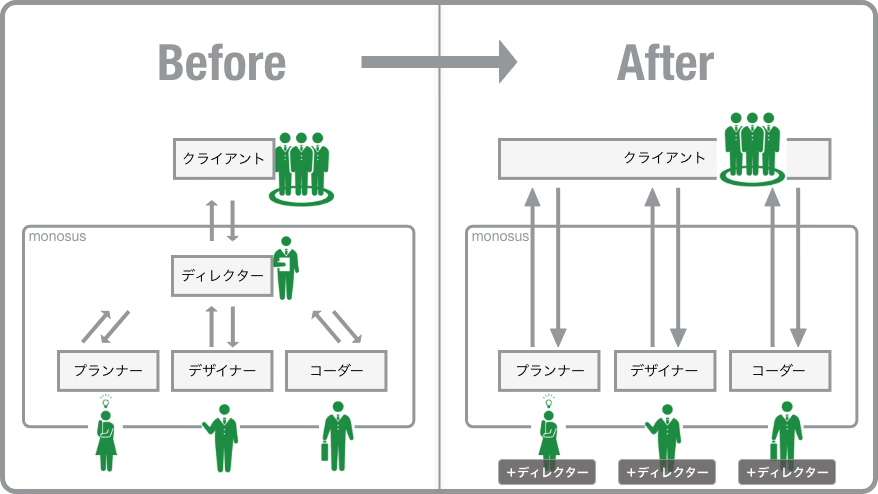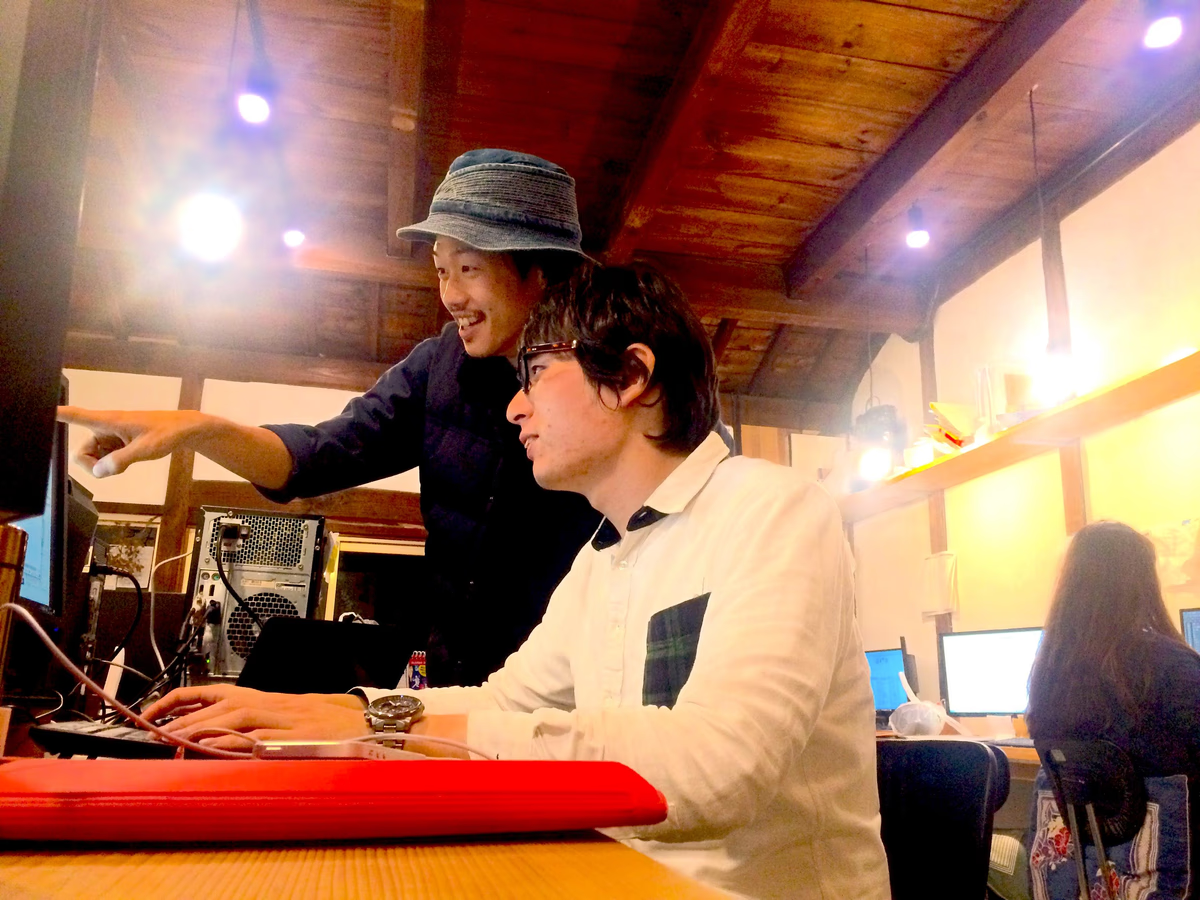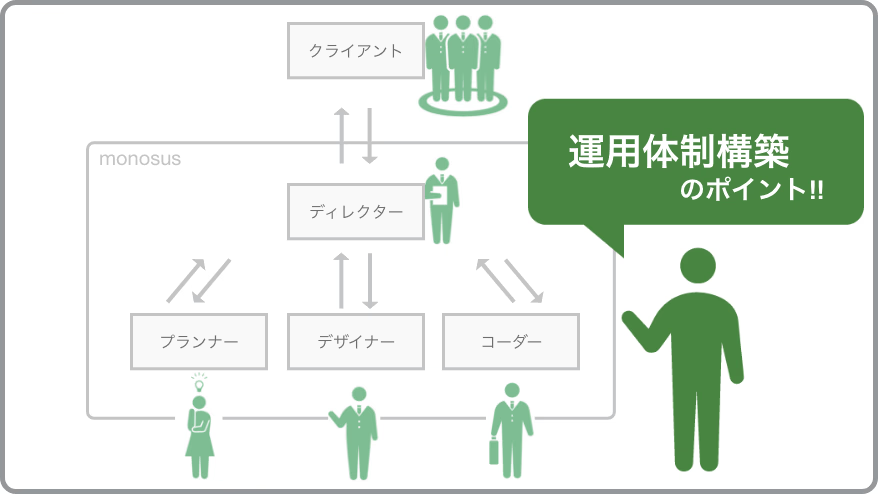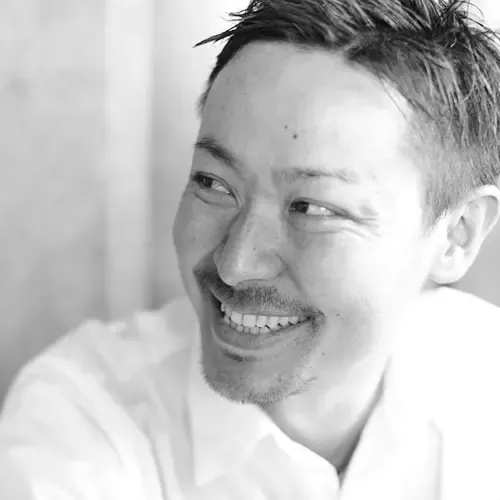クリエイティブ部所属・神山サテライトオフィス勤務の栗原です。
最近は、神山での生活や、サテライトワークでの出来事を中心に記事を書いていましたが、今回は久しぶりに仕事のことを書いてみようと思います。
私が所属しているクリエイティブ部の主な業務は大きくわけて、 1. コーポレートサイトのリニューアル 2. Webサイト運用業務(Webマスター代行サービス) この2つですが、今回は後者の「Webサイト運用業務」の話をしたいと思います。
企業のコーポレートサイト、個人ブログ、SNS、スマホアプリ…世の中には把握できないぐらい多くのWebサイトが存在していますが、通勤電車の中でスマホ片手に見ているページも、日々誰かがページの構成や文章を考え、デザイン、コーディングを行って、Webサーバーへアップして、初めて私たちが閲覧できるように公開されています。
Webサイトの数だけ更新をする人がいるわけですが、そのなかで、企業のWeb担当者様と一緒にサイトの更新・改善を行っているのが、私たち「Webマスター代行サービス」です。 (サービスの詳細についてはこちらの記事をご覧ください)
クライアントから運用業務のご相談をいただくと、まず、クライアントのオーダーに合わせて専任メンバーを選抜してチームを作ります。そのチームのことを私たちは「運用体制」と呼んでいますが、この体制を整えていく際に気をつけていていることについて、今回はマネジメント的な視点からご紹介したいと思います。
チーム全員がディレクター
案件規模によって運用体制もさまざまですが、基本は以下のような構成でチームを組みます。 ディレクター(進行管理) プランナー(コンテンツ企画) デザイナー(デザイン) コーダー(コーディング)
4つの役割にわけて書きましたが、私が考える理想的な運用体制とは「専任のディレクターがいない」ことだと考えています。この「専任がいない」ということは、案件に携わる「全員」が、ディレクターであり、かつプランナーやデザイナーやコーダーであるべきだという意味です。
ディレクターの役割は、クライアントの意図や目的を理解して、プランナー、デザイナー、コーダーに指示を出したり、様々な課題をクライアントと調整する窓口ですが、この窓口を1人に集約するのではなく、全員が各フェーズで担う方が、よりスムーズに進行管理ができる、というのが理由です。
もちろん、旗振り役のディレクター(それを「主担当者」と呼んでいます)は立てる必要があると思いますが、ディレクター業務のみを行う専任ディレクターはいらないと思っています。(※案件の規模が大きい場合には必要です)

運用立ち上げ時は左の体制。右は理想の体制。
運用業務というのは、1回作って終わりではなく、長期間に渡ってクライアントのWebサイトに携わっていく仕事です。
誇張して言えば、やり取りを重ねるうちに、「あれやっといて」と一言依頼がきたら、サイト内の対応箇所をすべて把握してスムーズに案件を進めることができる、かつクライアントとのやり取りを最小限に抑えて本番公開まで持っていける、そんな熟年夫婦の「阿吽の呼吸」のような関係性が理想だと思います。
そのために大切なのは、クライアントを「理解」することです。 案件に関わる全員が、クライアントへの「理解」を積み重ねていくことで、「阿吽の呼吸」が生まれてくると考えています。
また、チーム全員がディレクションを担うことで、それぞれの視点での課題解決案が生まれるなど、よりクライアントの意図・目的を達成することにも繋がります。
依頼の内容は、テキストの差替などの軽微なものから、ランディングページ制作の複数人が連携して制作を進めるものと多種多様です。 軽微な依頼などは特にそうですが、各フェーズの担当者(プランナー、デザイナー、コーダー)が、直接クライアントとやり取りを行うことで、ディレクターを介して制作指示を伝えていた部分や、制作物チェックを行うディレクターのリソースが不要になる、といった工数面でのメリットも生まれてきます。
1. 「運用立上げ」に充分なリソースを割く
一つめは、依頼を受けてから運用フローを確立するまでに、充分なリソースを割くことです。具体的には、経験を積んだ専任のディレクターを配置することを心がけています。
運用案件がスタートしてから安定的に業務が回るようになるまでの期間を、私たちは「運用立上げ」と呼んでいます。この初期構築の期間に、経験値の高いディレクターをアサインすることで、クライアントの要望を細やかにくみ取って、それをチーム全体に共有し、業務の流れやルールを作っていくことが可能になります。
大半の案件に言えることですが、事前に依頼内容をヒアリングをしていても、実際に案件が始まると、確認すべき項目が次々と出てきます。それらを1個づつ確認しながら、その背景(なぜその方針なのか?、その対応なのか?)まで含めて、正しく理解することが必要です。なぜ?を正しく知ることで、クライアントの社内的な事情やシステム面の状況を理解し、今後の運用で発生し得る問題に対しても、適切な判断ができるようになります。
中途半端に物事を理解し、こちらの解釈で進めていくと、後々大きな認識の相違を生むことに成りかねません。そのためにも、立上げ期には充分なリソースを割いて、クライアントと同じ目線で、ときには導きながら、相手の意図や目的がより理解できるディレクターをアサインすることが必要です。
経験値の高いディレクターが案件の道筋を立てることで、メンバーはクライアントからの依頼を着実にこなして経験値を積み、やがて専任ディレクター抜きで対応を回せるようになります。これが「運用立上げ」のゴールです。

デザイナー・コーダーにて日々、依頼の内容、対応方法など情報共有を大事にしています。
2. 将来の運用体制を意識した体制をつくる
初期構築である「立上げ期」が順調に進み始めたら、将来を見据えた体制づくりを考えていきます。
チームメンバーのスキルを考慮しながら、安定運用ができる体制を考えていく必要がありますが、先述の「立ち上げ期」のディレクターは、ここで役割をスライドして、定期的な依頼とは別の+α(運用範囲外のリニューアルや改善提案、大規模改修など)の部分を、案件マネージャーとして担っていってもらいます。
そのためには、初期ディレクターが、早い段階で後任のメインディレクター候補を選出して、育成することが重要です。また、プランナー・デザイナー・コーダーへ、各フェーズのディレクション業務を渡しながら、それぞれが案件に関わる領域を広げていくことも必要です。
大事なのは、運用案件の初期に「運用業務が安定化したときに、どのような体制であるべきか」を考えておくこと。それを頭に置いておくことで、どのようにチームを構築し、どのようにメンバーのスキルを伸ばしていけば良いかが明確になります。
もちろん案件を進めていくうちに、描いていた理想とは別の体制が必要になることもあると思います。日々クライアントからのオーダーは変わるものですし、案件への理解が深まることで見えてくることもあります。その変化に応じた柔軟な体制が求められますが、まずは方向性を定めることが大事だと考えています。
「運用」とひと口に言っても、Webサイトが星の数ほどあるように、対応方法も様々です。今回ご紹介した内容は、本当に基本的な考え方の部分ですが、ここをブレないようにして柔軟にカスタマイズしていくことが、「Webマスター代行サービス」としての腕の見せ所だと思っています。

